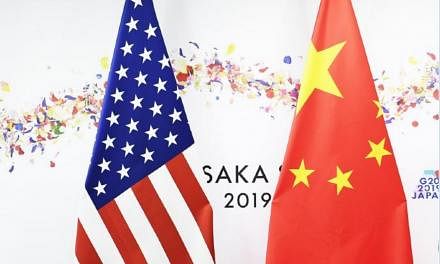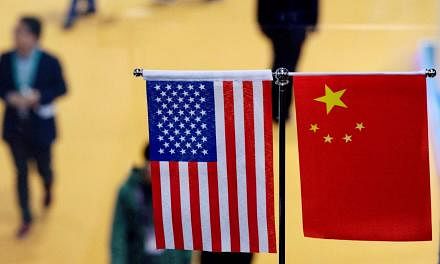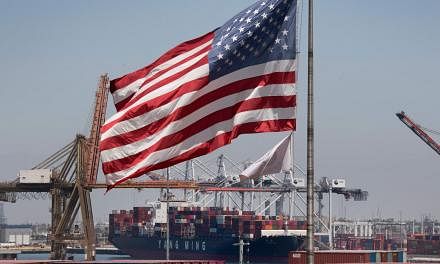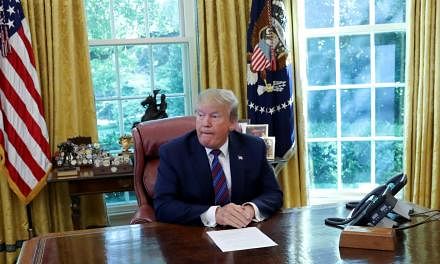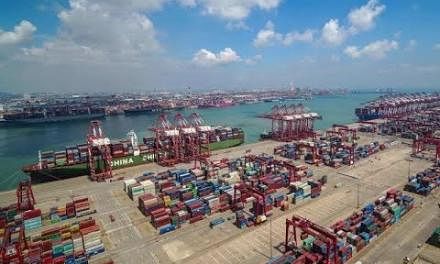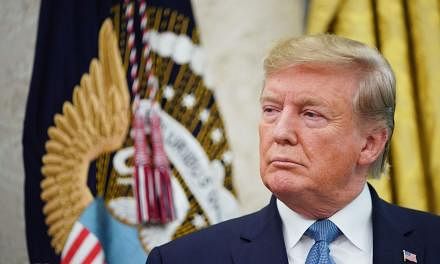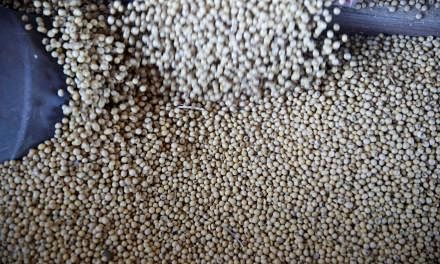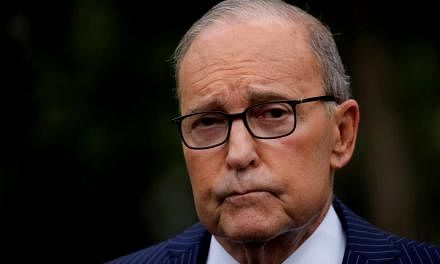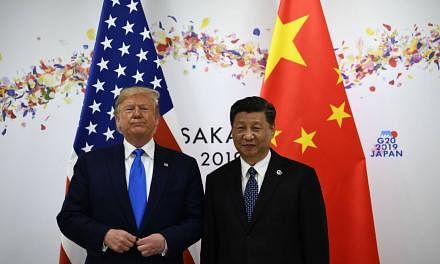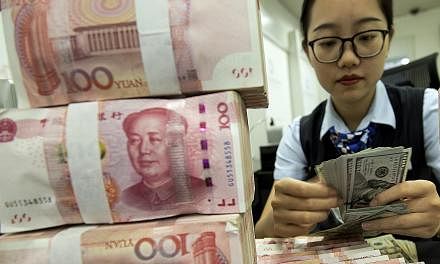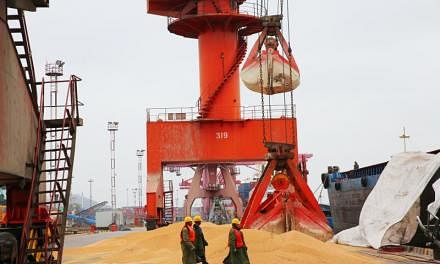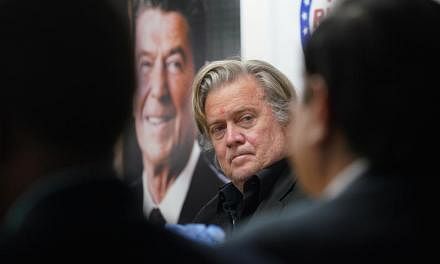BEIJING (BLOOMBERG) - Even before the trade war, President Xi Jinping's plan to turn China into one of the world's most advanced economies by 2050 was ambitious.
His grand vision is now looking more aspirational by the day.
As mounting pressure from US President Donald Trump adds to a slew of structural challenges facing China's US$14 trillion (S$19 trillion) economy - including record debt levels, rampant pollution, and an ageing population - the risk is that the country gets stuck in a "middle-income trap", stagnating before it reaches rich-world levels of development.
Economists say Mr Xi's government can avoid that fate by boosting domestic consumption, liberalising markets and increasing the country's technological prowess. But it would not be easy.
Only five developing countries have made the transition to advanced-nation status while maintaining high levels of growth since 1960, according to Nobel laureate Michael Spence, a professor at New York University's Stern School of Business.
"China trying to do this with active opposition from the US makes the hurdle that much higher to jump over," said Mr Andrew Polk, co-founder of research firm Trivium China in Beijing. "But the US has clearly lit a fire under China. If it ultimately does succeed we may look back at this moment as the catalyst that really kicked their efforts into high gear."
The International Monetary Fund (IMF) highlighted Mr Xi's challenge last Friday (Aug 9), saying in its annual report on China's economy that if a comprehensive trade agreement is not reached, it would damage the nation's long-term outlook.
"China's access to foreign markets and technology may be significantly reduced," the IMF said.
Odds of a near-term trade deal appear low. After Mr Trump issued a surprise threat to apply new tariffs on US$300 billion of Chinese goods two weeks ago, Beijing responded by halting purchases of US crops and allowing the yuan to fall to the weakest level since 2008 on Aug 5.
Mr Trump's administration fired back within hours, formally labelling China a currency manipulator. The White House is also holding off on a decision about granting exemptions to US companies that want to do business with Huawei Technologies, the Chinese tech giant that Mr Trump placed on a blacklist in May, people familiar with the matter said.
Any concessions from China are unlikely until October at the earliest, said Mr Jeff Moon, a former assistant US trade representative for China affairs.
Mr Xi faces growing internal pressure to project strength as anti-government protests in Hong Kong intensify and China prepares to celebrate the 70th anniversary of the founding of the People's Republic on Oct 1.
"Any sign of weakness is unacceptable to Chinese leaders," Mr Moon said.
In one sign of how rapidly the Sino-US relationship has deteriorated, some state media in China have raised the prospect that Beijing may consider cutting off engagement on trade entirely. Communist Party-run publications have stoked nationalism in recent weeks while exuding confidence in China's economic system and its flexibility to cope with external challenges.
"Chinese enterprises are speeding up adjustment, creating new export markets," Mr Hu Xijin, the editor-in-chief of China's state-run Global Times, said in a Twitter post last Thursday, after data showing overseas shipments beat expectations in July.
In the short run, China's government has ample firepower to prevent economic growth from falling below the 6 per cent lower bound of its annual target range. Bloomberg Economics predicts that the central bank will cut interest rates this year, while Standard Chartered expects fiscal stimulus to drive a moderate recovery in the second half of 2019.
Mr Xi has also made some progress in tackling China's long-term challenges. A more than two-year deleveraging campaign has helped wring some of the worst excesses out of the country's debt markets, while regulators have taken a much harder line on high-polluting industries in recent years. The services sector now accounts for more than half of gross domestic product.
China has also poured billions into developing a homegrown high-tech industry, going head-to-head with the West in areas like artificial intelligence and electric vehicles.
In an October 2017 speech that laid out his long-term vision for the Chinese economy, Mr Xi vowed to join the most innovative countries by 2035 on the way to great-power status by 2050.
Yet the trade war has laid bare just how far China remains from some of Mr Xi's targets. The most striking example: America's blacklisting of Huawei, which threatens to cripple the Chinese national champion because local chip designs are not yet sophisticated enough to replace those from the United States.
"For China it will be harder to access state-of-the-art technology," said Mr Bert Hofman, director of the East Asian Institute at the National University of Singapore. "This will make it harder for China to catch up, but at the same time it will set stronger incentives to develop their own technology ecosystem. How China does this will determine how fast they will grow."
Debt and demographics are two other big challenges. China's debt burden has continued to rise despite the deleveraging campaign, climbing to about 303 per cent of GDP in the first quarter, one of the highest ratios among developing nations, according to the Institute of International Finance. The country's working-age population is forecast to shrink by more than 20 per cent to 718 million by 2050, according to data compiled by the United Nations.
While China's per-capita GDP has jumped tenfold since 2000 to an estimated US$10,000 this year, it is still far below readings of about US$65,000 in the US and Singapore - one of the five economies highlighted by Nobel laureate Dr Spence as having achieved advanced-country status since 1960.
China's economy is still expanding faster than its rich-world counterparts for now, but its advantage is shrinking.
Growth slowed to 6.2 per cent in the second quarter, the weakest pace in at least 27 years, and Standard Chartered estimates that if Mr Trump's threatened tariffs come into effect on Sept 1, they could slice 0.3 percentage point off China's annual rate of expansion.
Mr Xi has tried to diversify the country's stable of overseas customers via his signature Belt and Road Initiative and other trading pacts, but the US still accounts for about 20 per cent of China's exports.
"The US-China trade tensions certainly make the transition harder," said greater China economist Michelle Lam at Societe Generale in Hong Kong. "China will lose some export market share and the technology spillover from the US to China will slow. But the current tensions also provide the opportunity for policy makers to press harder with reform."

